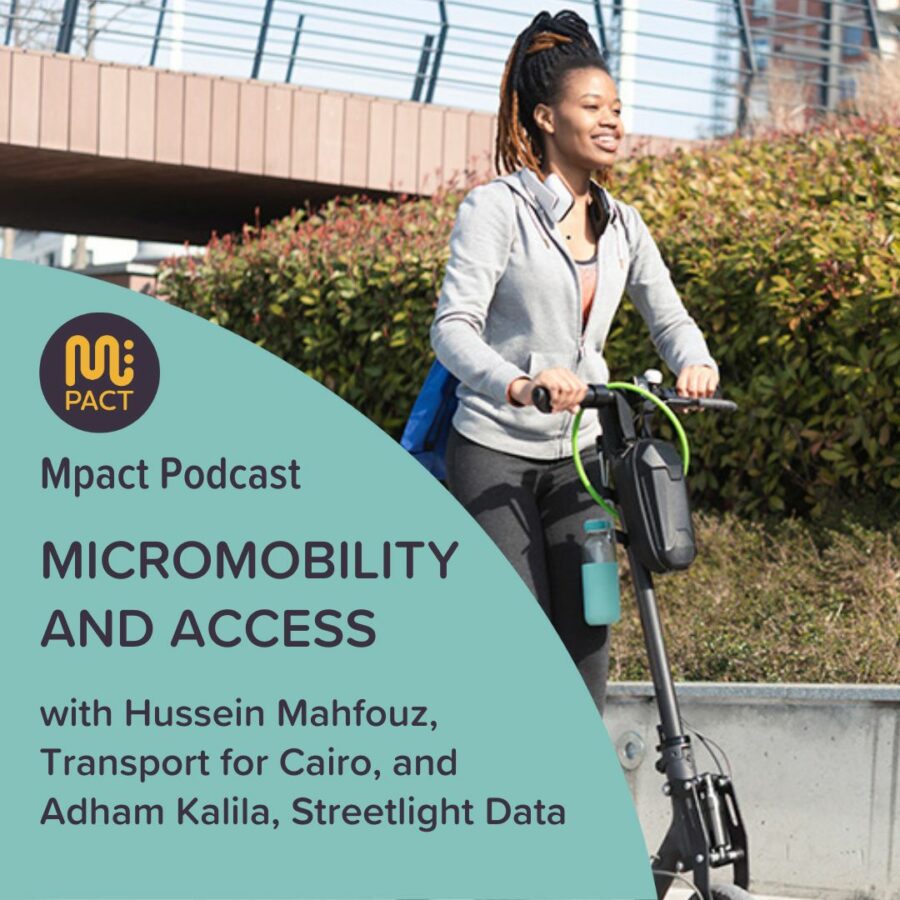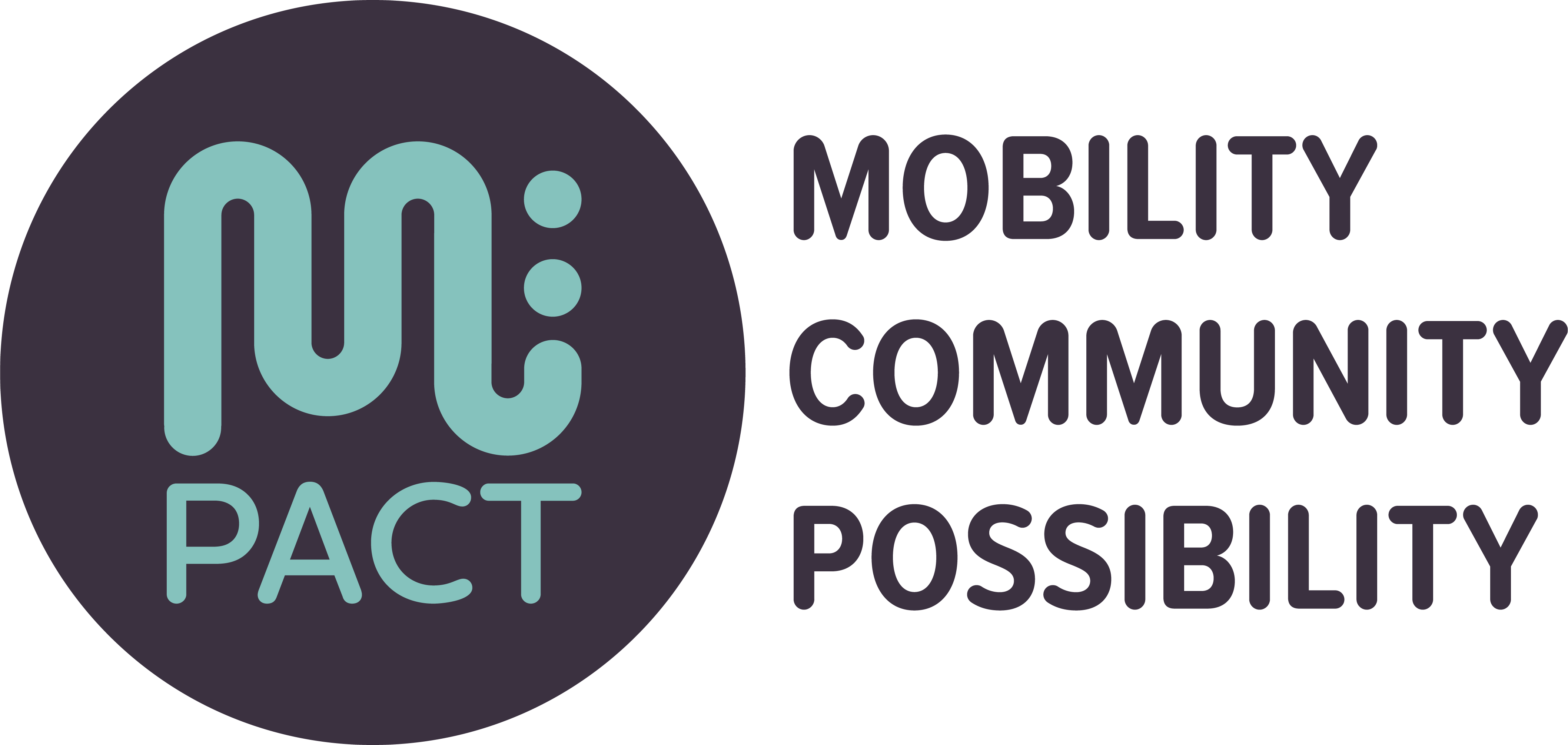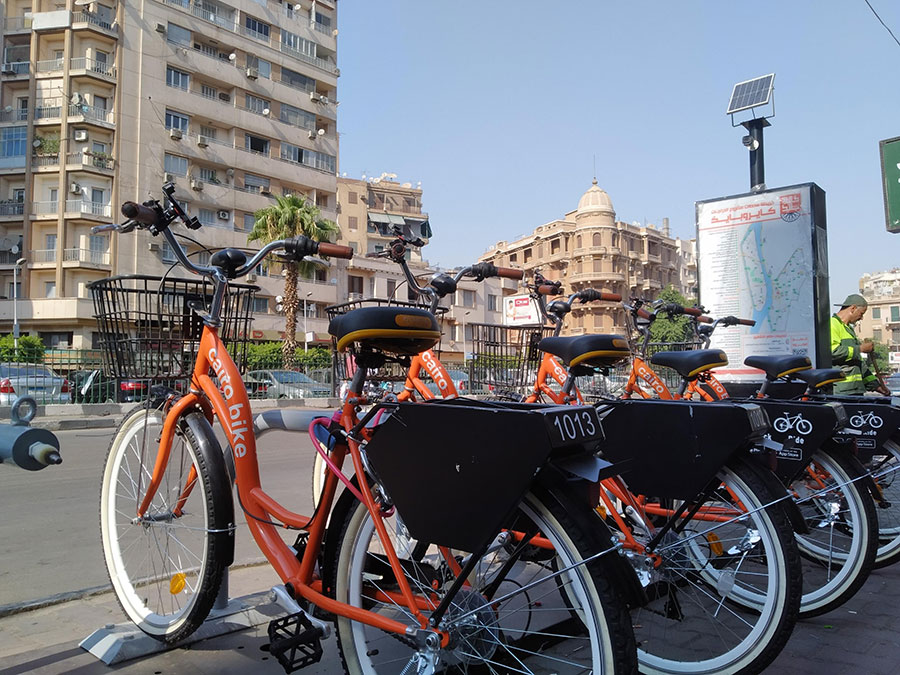Episode 68: Micromobility and Access
Our guests are Hussein Mahfouz and Adham Kalila, authors of a new report, All Possible Commutes: How Micromobility and Realistic Car Travel Times Impact Accessibility Analyses
Topics: Bicycling, Walking, Micromobility, Equity, Transit, Corridor Planning, Data

Unedited transcript Episode 68: Mobility and Access
This month on the Mpact podcast, we’re joined by Hussein Mahfouz of Transport for Cairo and Adham Kalila of Streetlight Data to talk about their new report created for NUMO, All Possible Commutes: How Micromobility and Realistic Car Travel Times Impact Accessibility Analysis. We learn about measuring car travel more accurately, how micromobility can improve access and a bit about transportation in the Cairo metro region.
If you’ve ever checked directions on Google maps, you know that the directions for transit include the time to walk to the bus stop and then (after your bus or train ride) from the transit stop to your destination. But there’s no equivalent set of dots for walking to your car, or finding parking and then walking to your destination. The directions present car travel as a seamless trip.
Access is becoming more familiar as a measure of how easily people can reach destinations and activities. But, as Hussein Mahfouz and Adham Kalila explain, the measures have not been on equal footing (no pun intended) across different modes – until now.
In the report, All Possible Commutes, Hussein Mahfouz, Adham Kalila and their co-authors pioneer several new approaches to measuring access. They add the full trip for cars. They factor in actual travel speeds for cars and buses. They look at bicycle access in terms of whether a given route is actually comfortable to ride. And they look at multimodal trips.
Their report crunches access for four cities – Cairo, Mexico City, Minneapolis-St Paul and San Francisco. The results show that micromobility is competitive with cars for shorter trips (15 or 30 minutes). Micromobility and transit also compete for longer trips (45 or 60 minutes) when service exists. The report also looks at outcomes for different ethnicities and income groups.
The report, and all the data sources and technical details, are available from NUMO, the New Urban Mobility Alliance, with the idea that researchers in other cities can use these tools to plot a more comprehensive set of potential outcomes from mobility investments.
Photo of bike share in Cairo – Credit Hussein Mahfouz
Featured Guests
Hussein Mahfouz, Transport for Cairo
Adham Kalila, Streetlight Data


